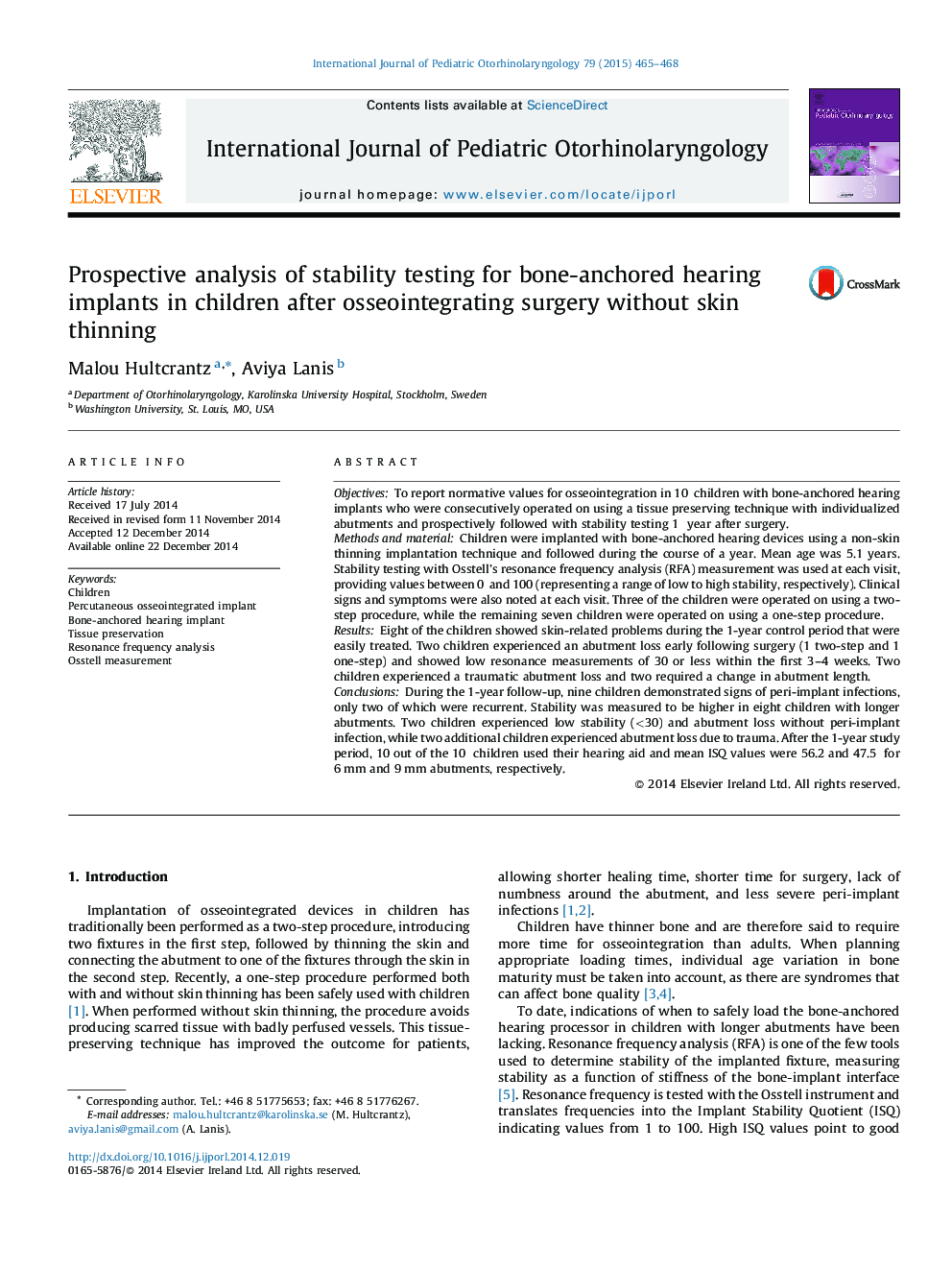| کد مقاله | کد نشریه | سال انتشار | مقاله انگلیسی | نسخه تمام متن |
|---|---|---|---|---|
| 4111693 | 1605997 | 2015 | 4 صفحه PDF | دانلود رایگان |

ObjectivesTo report normative values for osseointegration in 10 children with bone-anchored hearing implants who were consecutively operated on using a tissue preserving technique with individualized abutments and prospectively followed with stability testing 1 year after surgery.Methods and materialChildren were implanted with bone-anchored hearing devices using a non-skin thinning implantation technique and followed during the course of a year. Mean age was 5.1 years. Stability testing with Osstell's resonance frequency analysis (RFA) measurement was used at each visit, providing values between 0 and 100 (representing a range of low to high stability, respectively). Clinical signs and symptoms were also noted at each visit. Three of the children were operated on using a two-step procedure, while the remaining seven children were operated on using a one-step procedure.ResultsEight of the children showed skin-related problems during the 1-year control period that were easily treated. Two children experienced an abutment loss early following surgery (1 two-step and 1 one-step) and showed low resonance measurements of 30 or less within the first 3–4 weeks. Two children experienced a traumatic abutment loss and two required a change in abutment length.ConclusionsDuring the 1-year follow-up, nine children demonstrated signs of peri-implant infections, only two of which were recurrent. Stability was measured to be higher in eight children with longer abutments. Two children experienced low stability (<30) and abutment loss without peri-implant infection, while two additional children experienced abutment loss due to trauma. After the 1-year study period, 10 out of the 10 children used their hearing aid and mean ISQ values were 56.2 and 47.5 for 6 mm and 9 mm abutments, respectively.
Journal: International Journal of Pediatric Otorhinolaryngology - Volume 79, Issue 4, April 2015, Pages 465–468